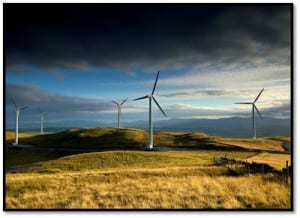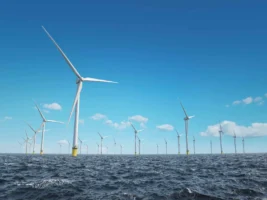 The pointlessness of Australia’s safeguard mechanism – supposedly one of the key elements of the Coalition government’s Direct Action policy – has been highlighted after the release of the first “baselines” for major polluters over the weekend.
The pointlessness of Australia’s safeguard mechanism – supposedly one of the key elements of the Coalition government’s Direct Action policy – has been highlighted after the release of the first “baselines” for major polluters over the weekend.
The Coalition government quietly released the baselines, the first that will affect some 300 highly polluting facilities across Australia, and it highlights the fact that Australia’s dirtiest coal fired generators will be given carte blanche to keep on emitting, or even increase their emissions.

This graph above shows an example of some of those baselines. In theory, polluting facilities are allowed to emit as much as they have in any year of the past seven, without penalty. Even if they do exceed that level, they will probably not be punished.
The Clean Energy Regulator released the baselines as a spreadsheet, but have been put into graph form (above) by the Greens. They note that some of the dirtiest power stations – Hazelwood, Loy Yang B, Stanwell – have yet to have their baselines allocated. They also note that emissions have risen at many plants since the carbon price was repealed.
Analysts say that the only way that the safeguards mechanism can ever be effective is if they are tightened dramatically, and if real penalties apply if they are exceeded.
That way, the generators are required to invest to reduce their emissions, or buy credits from an emissions trading market, but of course such an idea is anathema to a government with a large cohort of climate deniers in the ranks, and which has run hard on anti-carbon pricing in the last three election campaigns.
The chances of any penalties are remote. Utilities are not even penalised if they fail to meet the renewable energy target. The so-called “penalties” are simply passed on to consumers and the revenue fills government coffers.
Direct Action, as originally conceived, was supposed to allow for a transition to a “baseline and credit” scheme, that would use tight baselines as a platform for trading. This was the foundation of a Labor Party compromise put during the recent election campaign.
Activists and analysts say this could represent a common meeting between the two parties, but so far the Coalition government has shown no interest.
Its promised review of climate policies next year is described as a “stocktake”, not a launching pad for tighter policies that most say is needed to meet even the government’s modest targets of 26-28 per cent reductions by 2030.
In the meantime, coal fired generators will be allowed to continue emitting at their worst levels for the foreseeable future, slowly cooking the planet without penalty while waiting for policy makers to get serious about the issue.










